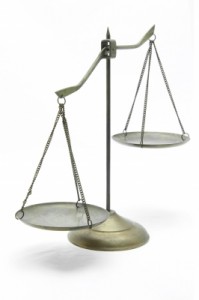This week I’m going to look at each of Looseleaf’s editorial services and tell you what they are, when you need them, and some tricks you can use to do some editing yourself before you hire it out. Today is proofreading day.
What Is Proofreading?
Proofreading is a lot like copyediting, which I talked about yesterday, but with a few important differences. It’s still nuts-and-bolts editing, but it’s more restrained than copyediting. Proofreading is supposed to be the last thing that happens before a book is released (except fixing the errors found in proofreading, of course). This means that sometimes a proofreader will allow text through that isn’t ideal, but isn’t exactly wrong either. When I proofread I look for errors and inconsistencies that the author would change if he or she saw them, not for things I think should change. If it won’t make the author look like an idiot, at this point, it’s probably okay.
Proofreading also tackles an aspect copyediting leaves alone: formatting. Because I proofread on the final version of a manuscript, I make sure the final version looks the way it is supposed to. If there are font changes, I point them out for the typesetter; if there are words that are hyphenated in an unhelpful way, I suggest a different line break. I point out lines that are too spaced out, too cramped, or too short to stand on their own. I make sure page breaks happen at good points in the text and that there are no distracting patterns in the word spaces. (If you’re savvy to typesetting lingo, proofreaders look for bad breaks, widows, orphans, rivers, word stacks, and more.)
Proofreading is important for both print books and ebooks. Ebook formatting can get botched during creation or during conversion from one file format (e.g., .doc, .pdf, .indd) to another (e.g., .epub, .mobi, .amz), and it’s important to proofread the final version as it will be seen by your reader.
When Does a Manuscript Need Proofreading?
As you’ve probably gathered from my description of proofreading, it’s the very last thing you do. Proofreading should be done on manuscripts that have already been copyedited and that are deemed ready to be released. If you don’t have your manuscript in the final version for print or electronic distribution, proofreading isn’t for you yet. This can be an important distinction when you’re hiring someone. Most editors will be able to figure out if you’ve asked for proofreading when you actually wanted copyediting, but knowing the difference will help you search for the right editor.
How Can You Do Some Proofreading Yourself?
As with copyediting, I don’t recommend proofreading for yourself. That isn’t to say you’re incapable of catching the types of errors proofreaders focus on, but rather that when it comes to your own work it’s not advisable to rely on yourself. If someone has seen your manuscript before (unless it was a very different version), they’re probably the wrong person for your proofreading. I won’t proofread manuscripts I’ve already worked on; instead I choose one of my stellar editor friends, have them proofread it, and then review their work to make sure it’s in line with what the author and I have discussed in previous edits. This ensures that the author is getting the best editing possible. If I’m new to a manuscript, that means I’m the right person for the job. When it comes to your manuscript, you’ve seen it too many times to be qualified.
So instead of telling you how to proofread, I’m going to give you some tips on preparing to hand your manuscript over to a proofreader, whether you’re paying them or not. The best piece of advice I can give you is to make a style sheet. A style sheet gives your proofreader a map for how things should be, and it cuts down on the time a proofreader spends asking you questions. Here are a few things that should be in your style sheet:
- How you spell and capitalize characters’ names, place-names, theories, principles, and objects unique to your manuscript. (It’s also helpful to write out any acronyms you use.)
- What style guide you use for your citations (Chicago, APA, MLA, etc.).
- What color your characters’ eyes, hair, skin, etc. are. (Other personal details that need to be consistent—like age—are also very helpful.)
- Any facts that are particularly pertinent to making sure everything makes sense chronologically.
- Your stance on any ambiguous language issues you feel strongly about (e.g., who / whom). This also includes any unique spellings you have that deviate from dictionary standards (e.g., writing lifewriting as one word instead of two).
If you have a style sheet with your opinions and needs for the manuscript on it, you’ll have one extremely happy proofreader, which is almost as good as proofreading for yourself.







